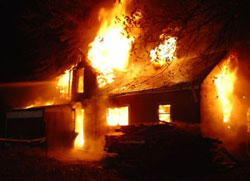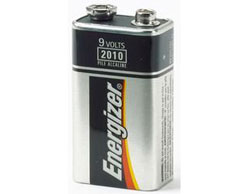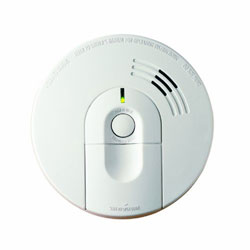According to NSW Fire and Rescue service, 47% of fires are started in the kitchen and 43% off all fire fatalities occur in winter. Reducing the risk of fire damage and deaths starts by being prepared and taking precautions this winter. Minimise risk by ensuring your smoke alarms are ready to give you the earliest warning of fire possible.
Statistics show that a third to half of house fire deaths could have been prevented if the home was fitted with a working smoke alarm and the residents had a home escape plan.

For a smoke alarm to work efficiently it needs to:
- have a reliable, working battery or
- be connected to the mains power by a licenced electrician
- be positioned correctly
- clean and free of dust and insects
- tested regularly
- less than 10 years old
Battery
Ensuring your smoke alarm battery is reliable only takes a few minutes each month and 5 minutes once a year. Test your alarm monthly to make sure it's working and will go off if there is a fire in your home. Each alarm will have a button on the outer casing which allows you to quickly test the alarm. If you can't reach it easily use the handle of a broom to gently press the button, the alarm will only sound for a few seconds to let you know it is working well.
Once a year swap the old batteries for new, we recommend 1 April but you can use a birthday, New Year's day, Easter or any other significant date which will help to remind you to swap the batteries over. Add it to your electronic/online/phone calendar now so you won't forget next year. For the cost of new a 9-volt battery (less than $6) you're protecting your family plus all your possessions and the house from fire for a full year.

Hard wired smoke alarms
QLD Fire and Emergency Services recommend that the best type of alarm is a hardwired photoelectric smoke alarm or one powered by a 10-year lithium battery. The hard wired smoke alarm is connected to the mains power of your home, much like the lights, and is fitted with a backup battery system in case of a power out. The advantages of this type of smoke alarm system are:
- it is more reliable in the long term
- provides the earliest warning possible
- has two power sources if one fails
- alarms can be interconnected meaning when one alarm is triggered all the alarms in the house will sound ensuring everyone gets out fast.
A hard wired smoke alarm needs to be fitted and maintained by a licenced electrician

Correct smoke alarm positions
47% of fires start in the kitchen so it makes sense to attach the smoke alarm in the kitchen over the cook top, right? Wrong. Placing an alarm in this position almost guarantee's that it will be taken down within a month because it goes off every night and most mornings when you cook dinner or breakfast.
The fire alarm needs to be placed where it will detect a fire and warn potentially sleeping residents without going off time you cook toast or have a hot shower. Each home will be different due to the layout but legislation says you need a smoke alarm between the bedroom and the rest of the house, plus one on each storey of a multi-level home, ideally you would install extra interconnected alarms in each bedroom, the hallway outside the bedrooms and in the living area of each level.
Cleaning and testing
Clean your smoke alarm every six months with the vacuum cleaner as dust and dead insects can interfere with the smoke sensor. Test the alarm every month to make sure they are working correctly. By that, we don't mean building a small fire to see if it goes off but just pressing the button on the front so the alarm goes off for a short time.
Replacing your smoke alarms
All types of smoke alarms last for around 10 years, after this time the sensitivity begins to diminish and it may not react quickly to a fire. Your alarm will have a manufacture date, batch number or a used by date on the back or side so you can see when new replacement smoke alarms will be needed.